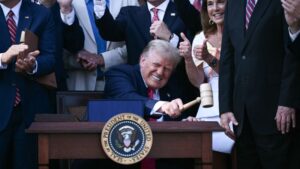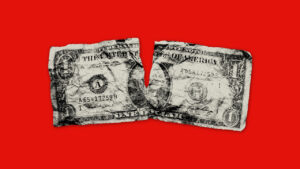The recent economic report about the United States inflation rates reveals a slight increase, hitting 2.4% in May, up from 2.3% in April. This data, released by the Labor Department, is closely scrutinized as it offers insights into the impact of tariffs imposed under former President Donald Trump’s administration. Despite the uptick in certain price categories, such as toys, car parts, and major appliances, the overall influence of these new trade policies appears to be limited.
In their analysis, economists have noted that while there is a noticeable rise in specific sectors, this is tempered by declines in essential areas such as gas prices, airline fares, and clothing. This balancing act suggests a complex picture of inflation where not every category is uniformly affected. The monthly inflation report is pivotal as it helps gauge how Trump’s tax hikes on imports are shaping the financial landscape of the nation, the world’s largest economy.
Since re-entering the White House in January 2025, Trump has enacted significant tariffs across a spectrum of imports, typically imposing a 10% levy on many goods and launching even higher tariffs on selected categories from certain countries. These measures aim to protect American industries; however, there are concerns that such tariffs could escalate costs for businesses, inevitably translating into higher prices for consumers and reviving inflationary pressures that seemed to be alleviating.
Despite economic forecasters warning about potential price spikes from these tariffs, Trump has maintained a contrary viewpoint. He argues vigorously that foreign companies will primarily bear the brunt of these additional costs. He envisions a scenario where American producers benefit from the tariffs, leading to an enhancement in the overall economy. Nonetheless, current reports indicate the tangible effects on consumers remain subdued, particularly affecting goods like appliances that heavily rely on imports from China.
The latest findings show that overall prices rose by just 0.1% from April to May, following a modest increase of 0.2% in the prior month. While analysts agree that the full effects of tariffs are still forthcoming, many express caution. “Today’s below-forecast inflation print is reassuring – but only to an extent,” stated Seema Shah, the chief global strategist at Principal Asset Management. The sentiment is clear: while the current numbers are comforting, the potential delayed consequences of tariff-driven price increases could still sneak into the Consumer Price Index (CPI) over the coming months.
In specific categories, rents and housing prices surged by 3.6% compared to the same period in 2024, indicating a continuing increase in housing costs. Groceries joined this upward trend, rising by 2.2%. These data points highlight the ongoing struggles households face, particularly in navigating the volatile costs of living.
Overall, the economic narrative shaped by the latest inflation report is one of cautious optimism mixed with underlying apprehension. It exemplifies the delicate balance within the U.S. economy, where the lingering effects of tariff policies could soon reveal themselves, challenging the current perception of inflation stability. This situation underscores the necessity for vigilance in the face of changing economic dynamics influenced by domestic policy decisions.
Tags associated with this article include “US economy,” “Trump tariffs,” “Inflation,” and “Cost of Living,” reflecting the critical themes tied to consumer finance and economic policy in America today.











